Walking Kalanchoe: Characteristics and Care
Have you ever come across a plant that seems to have a life of its own, literally walking across your garden? Well, brace yourselves, because the Walking Kalanchoe is here to shatter your expectations! This quirky succulent is a true marvel, showcasing nature’s ingenious ability to adapt and thrive. Get ready to be swept off your feet as we unveil the secrets behind this remarkable wandering wonder.
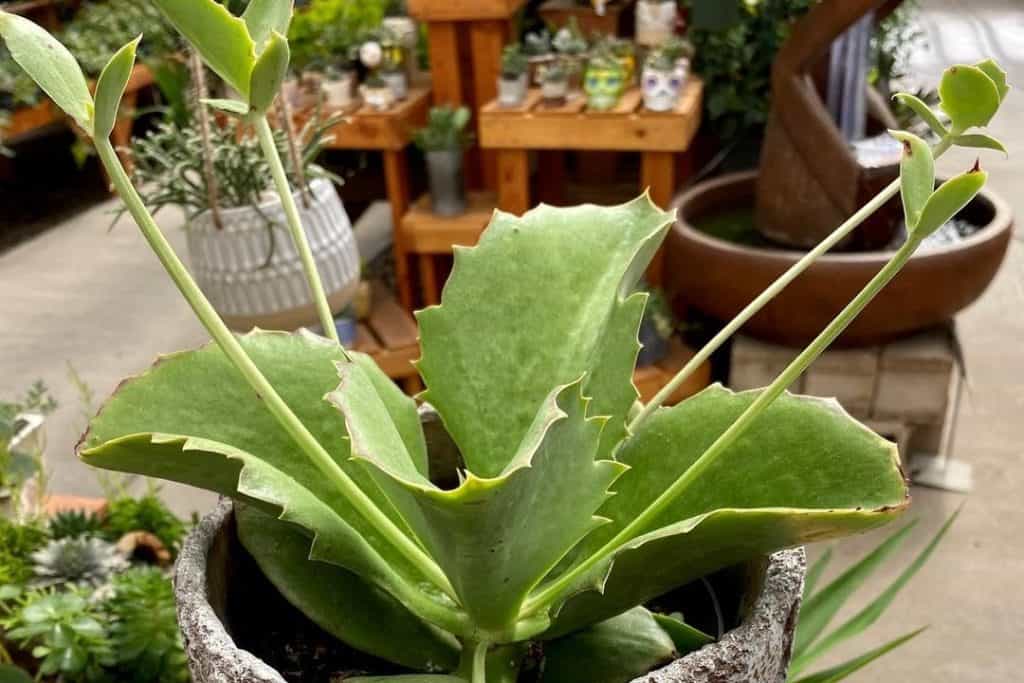
Contents
About the Walking Kalanchoe
Hailing from Madagascar and South Africa, the Walking Kalanchoe (Kalanchoe synsepala) is a truly unique succulent. It features fleshy green and reddish-pink rosette leaves with toothed edges. Come fall, it produces beautiful cylindrical white and pink flowers.
But the real draw of this plant is its uncanny ability to “walk” across gardens and containers, likely earning it its peculiar common name. Each year, the Walking Kalanchoe grows 2 to 4 long stems called stolons, much like strawberry plants. Tiny plantlets develop at the ends of these stolons. As the stems extend outward and droop, the plantlets take root, creating new offspring that appear to have “walked” away from the mother plant.
This ingenious self-propagation method allows the Walking Kalanchoe to spread effortlessly. It’s an enthralling process that has fascinated gardeners and undoubtedly inspired the plant’s wandering nickname.
Related Post:
40+ Kalanchoe Lower Classifications With Pictures
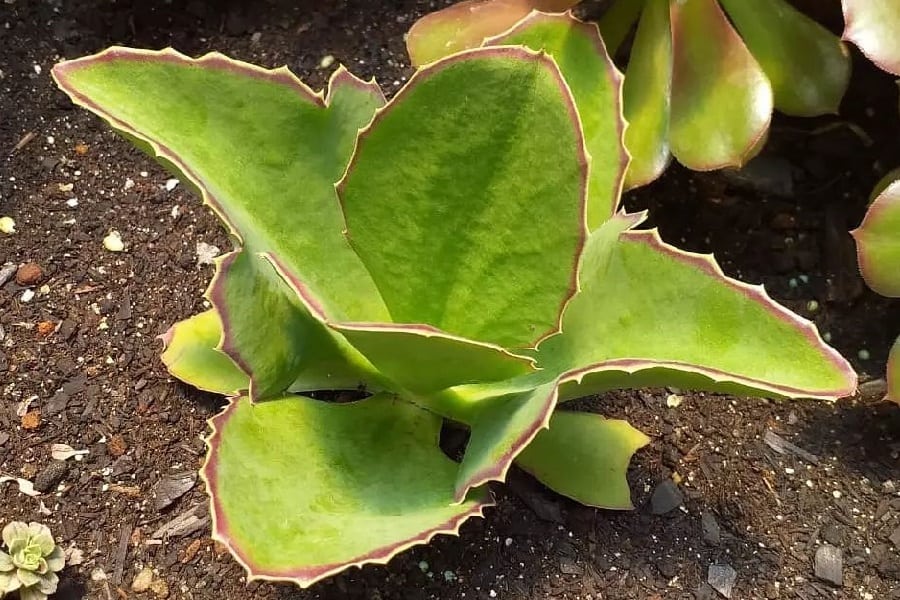
How To Care For The Walking Kalanchoe
Light Requirements
The Walking Kalanchoe thrives in bright, sunny conditions but can be sensitive to intense, direct sunlight, especially in regions with scorching summers. To keep your plant happy and healthy, provide it with lightly shaded spots that offer ample indirect light throughout the day. If grown indoors, a sunny window sill or the use of a grow light can mimic the ideal lighting conditions.
Grow lights are an excellent option for those who want to cultivate the Walking Kalanchoe indoors or in low-light environments. Look for full-spectrum LED grow lights that can be easily adjusted to the desired height and intensity, ensuring your wandering wonder receives the optimal amount of light it craves.
Watering Needs
As a drought-resistant succulent, the Walking Kalanchoe is remarkably forgiving when it comes to watering. However, it’s crucial to strike the right balance – overwatering can lead to root and leaf rot, while underwatering can cause the leaves to droop and fall off. The key is to allow the soil to dry out completely between waterings.
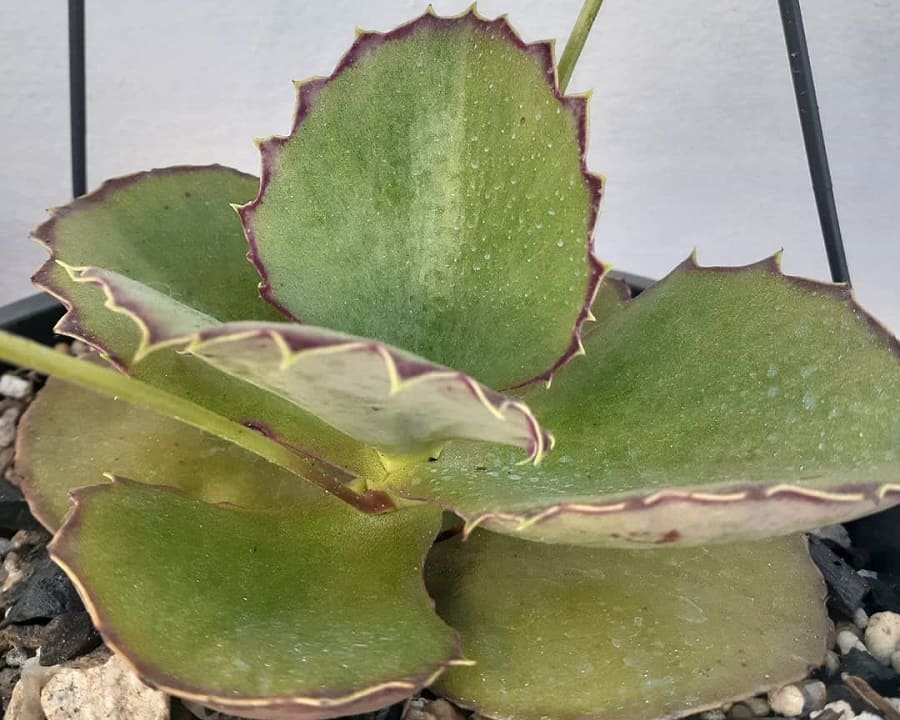
Soil Selection
For the Walking Kalanchoe to thrive, it’s essential to choose a well-draining soil mix specifically formulated for succulents. These mixes are designed to prevent waterlogging, a common issue that can spell disaster for these moisture-sensitive plants. If you prefer to create your own mix, combine equal parts of sand and a blend of peat moss and clay to achieve the perfect fast-draining medium.
Fertilizing Recommendations
While the Walking Kalanchoe can survive without fertilizer, providing it with an appropriate succulent fertilizer can encourage lush growth and vibrant colors. Consider incorporating a slow-release fertilizer into your care routine once a month, or opt for a liquid fertilizer solution for an added nutritional boost.
Temperature and Humidity Needs
The Walking Kalanchoe flourishes in warm climates and loves basking in the summer sun. However, it’s important to protect it from extreme cold, as temperatures below 55°F (13°C) can be detrimental to its well-being. If you live in an area with harsh winters, it’s best to move your plant indoors or cover it with a frost cloth to ensure its survival.
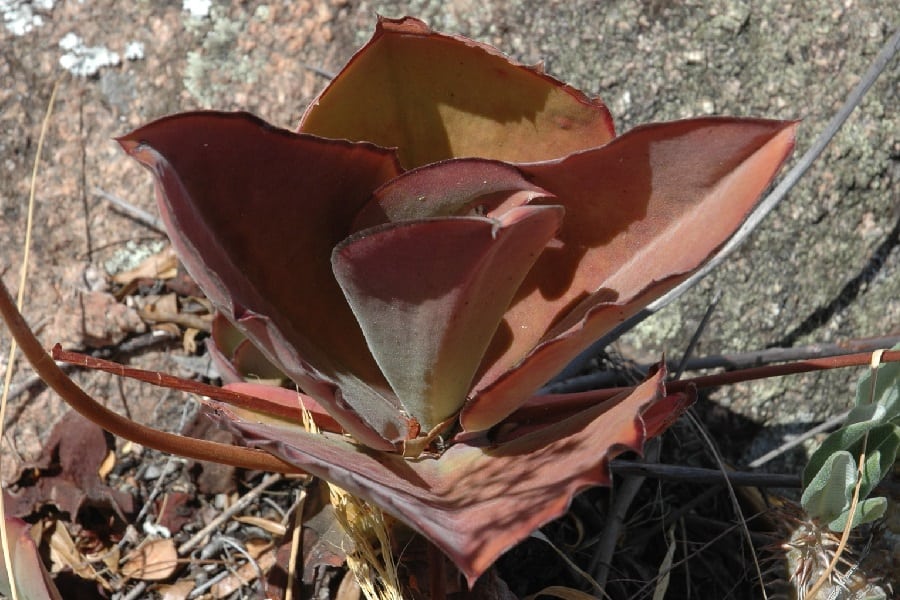
Pests and Problems
While generally hardy, the Walking Kalanchoe can occasionally fall victim to common succulent pests like mealybugs and aphids. Regular inspections and prompt action are key to keeping these unwanted visitors at bay. Insecticidal sprays or neem oil solutions can effectively combat infestations without causing harm to your beloved plant.
Pruning and Grooming
Like many succulents, the Walking Kalanchoe benefits from occasional pruning to maintain its shape and encourage new growth. Use clean, sharp pruning shears to remove any damaged or discolored leaves, as well as any straggly or overgrown stems, ensuring a neat and tidy appearance.
Potting and Repotting
When it comes to potting or repotting your Walking Kalanchoe, choose a well-draining container with ample drainage holes. Terracotta or ceramic pots are excellent choices, as they allow excess moisture to evaporate efficiently. Repotting should be done every two to three years, or whenever the plant outgrows its current home.
Walking Kalanchoe Propagation Methods
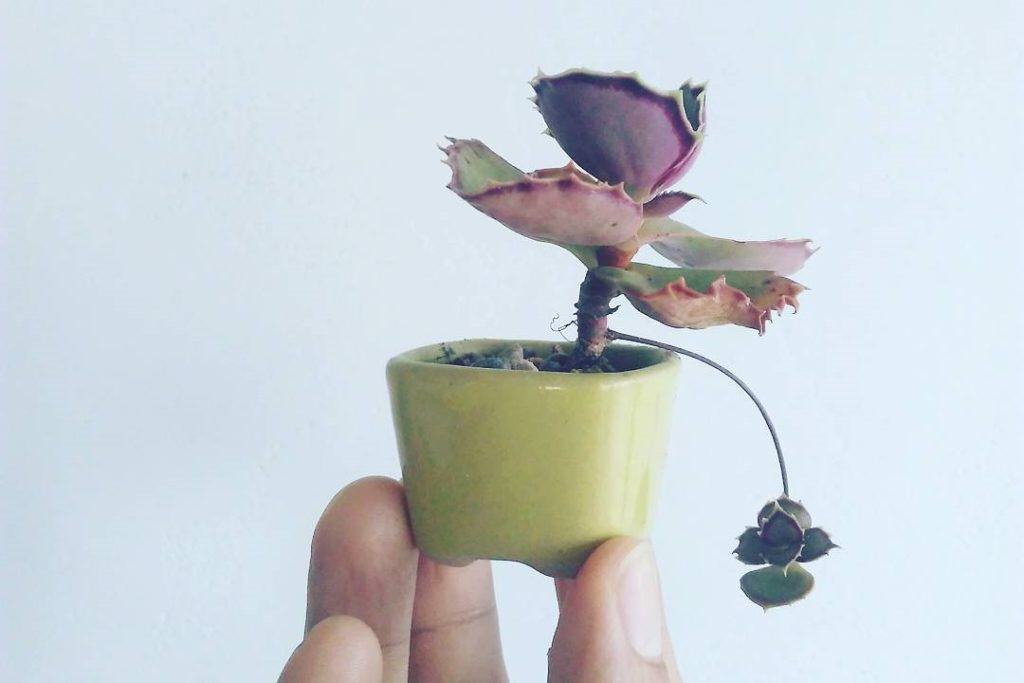
One of the most captivating aspects of the Walking Kalanchoe is its remarkable ability to propagate itself, showcasing nature’s incredible resourcefulness. Propagating the Walking Kalanchoe is incredibly simple, even for novice gardeners, and can be achieved through leaf cuttings, stem cuttings, or the plant’s unique stolons.
Leaf Propagation:
- Using clean pruning shears, carefully snip off a few healthy leaves from the mother plant.
- Allow the leaf cuttings to callous over by leaving them in a warm, sunny spot for a few days.
- Once calloused, lay the leaf cuttings on a well-draining succulent soil mix.
- Gently mist the cuttings with water about 5 times a day, avoiding direct sunlight exposure.
- When roots and new growth appear, transition to regular watering.
Stem Propagation:
- With sterilized pruning shears, cut off a few stem sections, each with a few leaf nodes.
- Let the stem cuttings callous over for a few days in a warm, sunny location.
- Plant the calloused stem cuttings in a well-draining succulent soil mix.
- Mist the cuttings regularly, keeping them out of direct sunlight until roots form.
- Once rooted, care for the new plantlets as you would an established Walking Kalanchoe.
Stolon Propagation:
- The Walking Kalanchoe’s unique stolons, with plantlets at their ends, can propagate on their own.
- As the stolons extend and droop toward the ground, gently guide the plantlets into contact with the soil.
- Keep the soil lightly moist until the plantlets take root.
- Once rooted, you can detach the new plants from the mother plant by cutting the stolon.
- Transplant the new offspring into their own pots or desired location.
Whichever method you choose, care for the newly propagated Walking Kalanchoes as you would an established plant, providing ample light, suitable soil, and appropriate watering. With its remarkable ability to self-propagate, this wandering wonder is sure to multiply and add a touch of whimsy to your indoor or outdoor spaces effortlessly.
